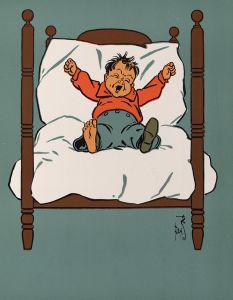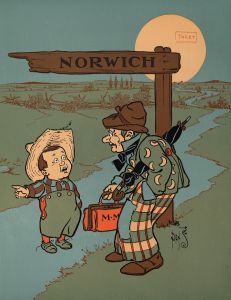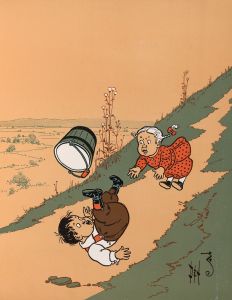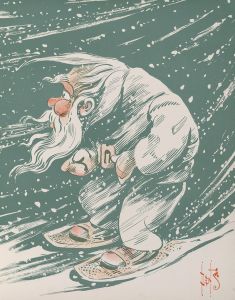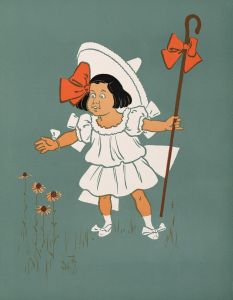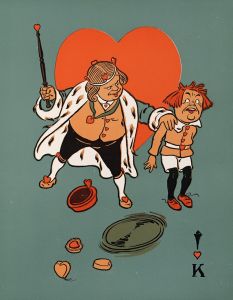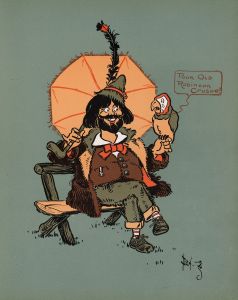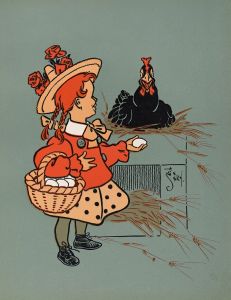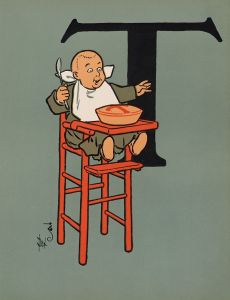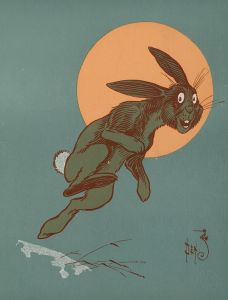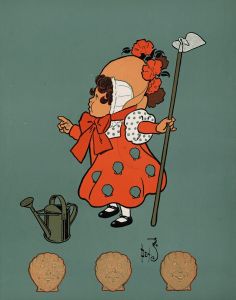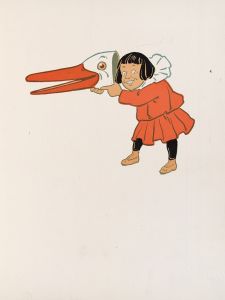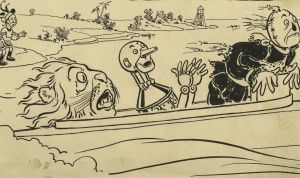
Denslow’s Mother Goose Pl 17
A hand-painted replica of William Wallace Denslow’s masterpiece Denslow’s Mother Goose Pl 17, meticulously crafted by professional artists to capture the true essence of the original. Each piece is created with museum-quality canvas and rare mineral pigments, carefully painted by experienced artists with delicate brushstrokes and rich, layered colors to perfectly recreate the texture of the original artwork. Unlike machine-printed reproductions, this hand-painted version brings the painting to life, infused with the artist’s emotions and skill in every stroke. Whether for personal collection or home decoration, it instantly elevates the artistic atmosphere of any space.
William Wallace Denslow was an American illustrator and caricaturist, best known for his collaboration with author L. Frank Baum on "The Wonderful Wizard of Oz." Among his notable works is "Denslow's Mother Goose," a collection of nursery rhymes published in 1901. This collection features a series of plates, each illustrating a different rhyme with Denslow's distinctive artistic style.
Plate 17 of "Denslow's Mother Goose" is one of the many illustrations in this collection. Denslow's work is characterized by bold lines, vibrant colors, and a whimsical approach that captures the essence of the nursery rhymes. His illustrations often include anthropomorphic animals and exaggerated human figures, which add a playful and engaging element to the traditional rhymes.
"Denslow's Mother Goose" was part of a larger trend in the late 19th and early 20th centuries to create richly illustrated children's books. This period saw a growing emphasis on the visual aspect of children's literature, with illustrators like Denslow playing a crucial role in bringing stories to life. His work on "Mother Goose" is a reflection of this trend, showcasing his ability to interpret classic rhymes through his unique artistic lens.
Denslow's illustrations are notable for their clarity and simplicity, making them accessible to young readers. His use of color is particularly striking, often employing a limited palette to create contrast and focus within each illustration. This approach not only enhances the visual appeal of the images but also helps to convey the narrative of the rhymes effectively.
The "Mother Goose" collection, including Plate 17, was well-received upon its release and contributed to Denslow's reputation as a leading illustrator of his time. His work on this collection, along with his collaboration with Baum, solidified his place in the history of American children's literature.
Denslow's artistic style in "Mother Goose" reflects the influences of the Art Nouveau movement, which was popular during the late 19th and early 20th centuries. This movement emphasized decorative arts and was characterized by intricate linear designs and flowing curves. Denslow incorporated these elements into his illustrations, giving them a distinctive and modern feel for the time.
While specific details about Plate 17 are limited, it is part of a larger body of work that showcases Denslow's talent and creativity. His ability to transform simple nursery rhymes into engaging visual narratives has left a lasting impact on the field of children's book illustration.
Overall, William Wallace Denslow's contribution to "Mother Goose" remains an important part of his legacy. His illustrations continue to be appreciated for their artistic merit and their role in shaping the visual landscape of children's literature in the early 20th century.





